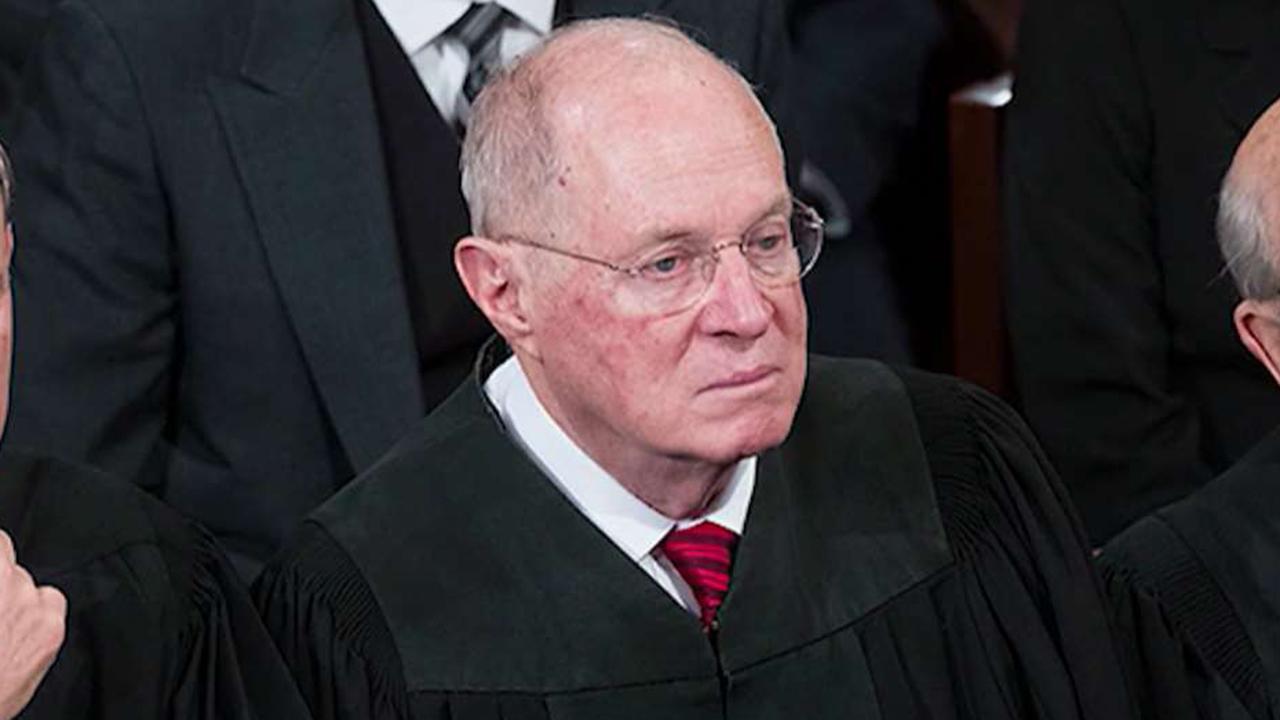Supreme Court hears partisan gerrymander case from Maryland
Republican incumbent Roscoe Bartlett lost his seat after Gov. Martin O'Malley and the state's Democratic General Assembly reshaped his district; Doug McKelway reports.
The Supreme Court took on act two of its bipartisan look at so-called "extreme" gerrymandering, with a majority seeming to believe Maryland Democrats were overly influenced by politics in carving a congressional district favoring their party.
But the justices struggled, as they have in previous cases, to unite behind a "manageable standard," as Justice Sonia Sotomayor put it, to determine when an expected level of partisanship impermissibly crosses a constitutional line.
The high court is being asked to endorse a workable standard going forward that would apply nationwide. The stakes are huge: the balance of power in state legislatures and Congress could tip in coming years, particularly after the 2020 census, when voting districts will be redrawn based on population changes.
At issue in the newest dispute is whether Republican voters can go to court and challenge a redistricting plan they say violated their First Amendment rights. That 2011 voting map shifted the political balance in the state's rural 6th congressional district, turning a traditional GOP stronghold to Democrat in an overall blue state.
The justices in October heard a separate appeal over legislative boundaries created by Wisconsin Republicans, and whether those lines were unfairly out of balance with the state's closely divided political makeup.
By hearing appeals from states controlled by both parties, renewed attention focuses on Justice Anthony Kennedy, who could again be the "swing"-- or deciding -- vote.
He wondered whether getting involved now and ordering a new map just months away from the November midterms would "upset settled expectations," suggesting it would "be disruptive of the current election scheme."
The justices have never invalidated a voting district because of an unconstitutional partisan gerrymander. And Kennedy's targeted questioning suggested he would not use the pending Wisconsin case as the precedent to decide the landmark issue, perhaps now relying on the more narrow questions raised in the Maryland appeal.
Justice Elena Kagan noted Democratic leaders in Maryland were "very upfront here, which was to create another Democratic district," noting the legislature got exactly what it intended.
"How much more evidence of partisan intent could we need?" she asked the state's solicitor general.
Maryland's Democrats sought to expand their power in the state's eight congressional districts, focusing on the seat held by longtime incumbent Republican Roscoe Bartlett.
He went from winning by 28-percentage points in 2010 to losing by 21-points two years later. This after tens of thousands of Republicans in the western part of the state were moved out of Bartlett's 6th District, replaced with Democrats from the Washington suburbs.
Michael Kimberley, lawyer for GOP voters in state, said their past support for Republicans led to a form of political retaliation by Democratic lawmakers.
But Justice Samuel Alito wondered whether that was enough to get a new map.
"I really don't see how any legislature will ever be able to redistrict," he said. "Hasn't this Court said time and again you can't take all consideration of partisan advantage out of districting?"
But others on the bench said the plaintiffs at least deserved a chance to make this case at trial.
"You have some pretty damning evidence that it might not have been" proper for the legislature to target the 6th district for revision. "Your own governor saying that he felt duty-bound to ensure that his party won," she said, referring to Democrat Martin O'Malley, now out of office.
"Part of the objection here to the way it was redrawn is that it doesn't seem to have any internal logic," added Chief Justice John Roberts.
He was among several justices raising procedural issues that could stop the Maryland case in its tracks, without a resolution.
Justice Stephen Breyer, in search of what he called a “practical remedy," suggested combining the Maryland and Wisconsin disputes with another pending case from North Carolina. That state was home to a congressional district once considered among the worst gerrymandered in the country, a thin, twisting boundary where one legislator remarked, "if you drove down the interstate with both car doors open, you’d kill most of the people in the district."
"We'd see them all together and they could attack each other's standards or they could support each other's standards or they could attack any standard?" said Breyer of his proposal. "But there we'd have right in front of us the possibilities."
He too suggested Maryland created an extreme gerrymander.
Breyer's comments suggested he and his colleagues were struggling with the pending Wisconsin petition and would do so in Maryland's case.
Courts nationwide in recent months have tossed out GOP plans in North Carolina, Pennsylvania, and Wisconsin.
The Supreme Court put revised maps in North Carolina and Wisconsin on hold, but allowed Pennsylvania's court-created map to go into effect for the congressional midterms.
More than three dozen states rely on the state legislature to redraw boundaries. Other states such as California rely on an independent commission to create what supporters say would be less extreme districts. Two years ago Kennedy was the deciding vote in a ruling allowing Arizona voters to put the process into such a commission.
The Maryland case is Benisek v. Lamone (17-333). A ruling is due by late June.






